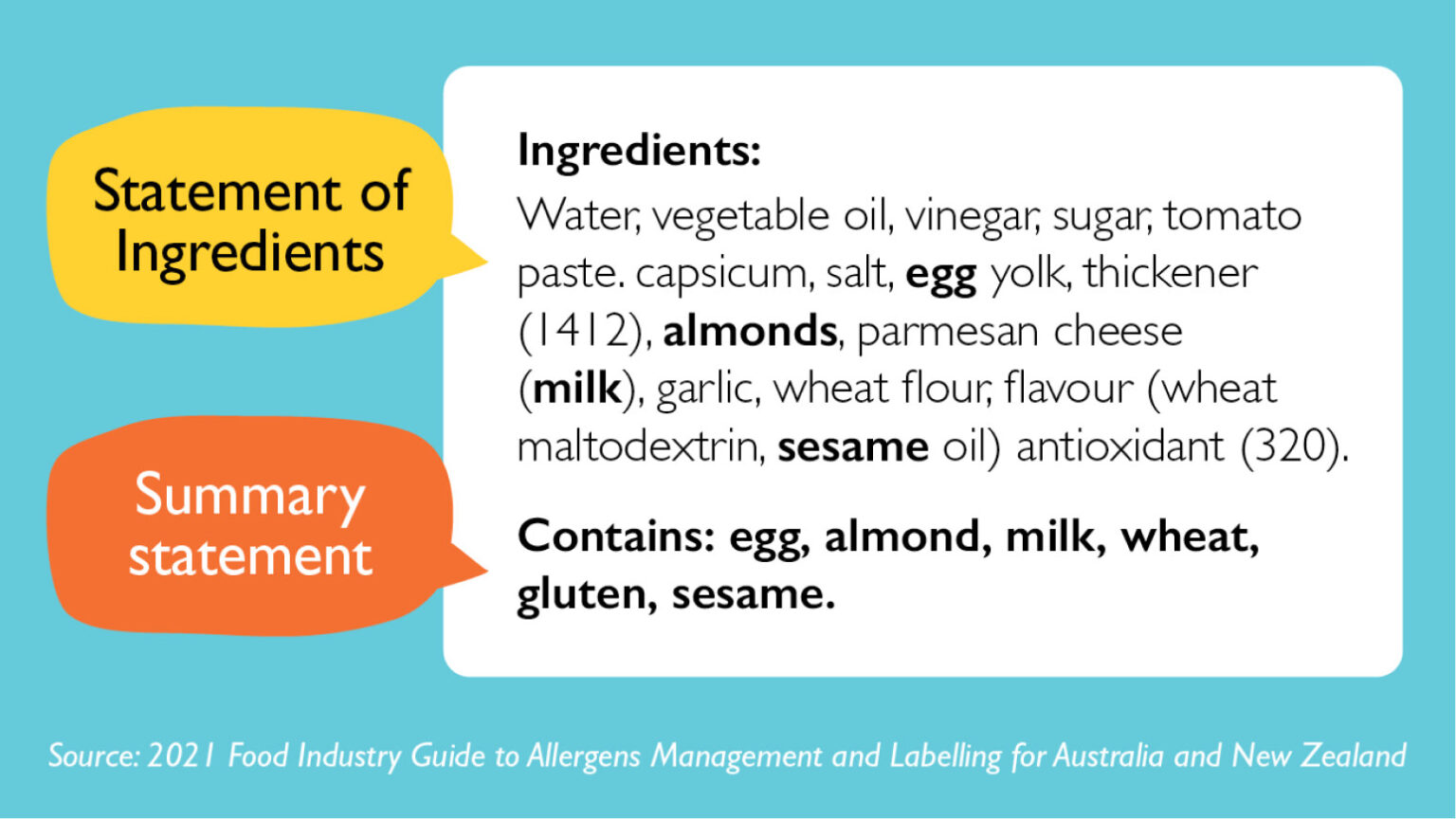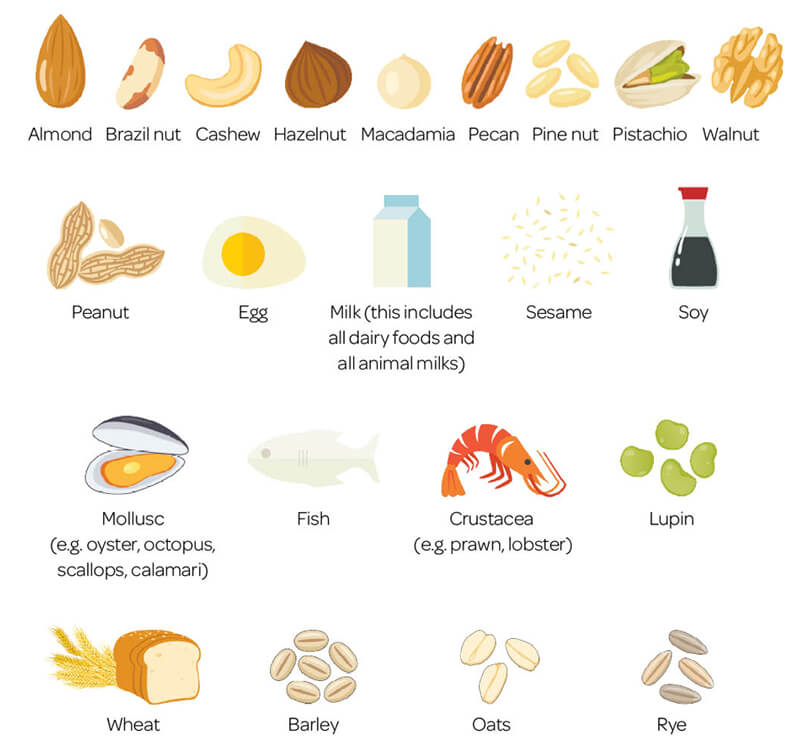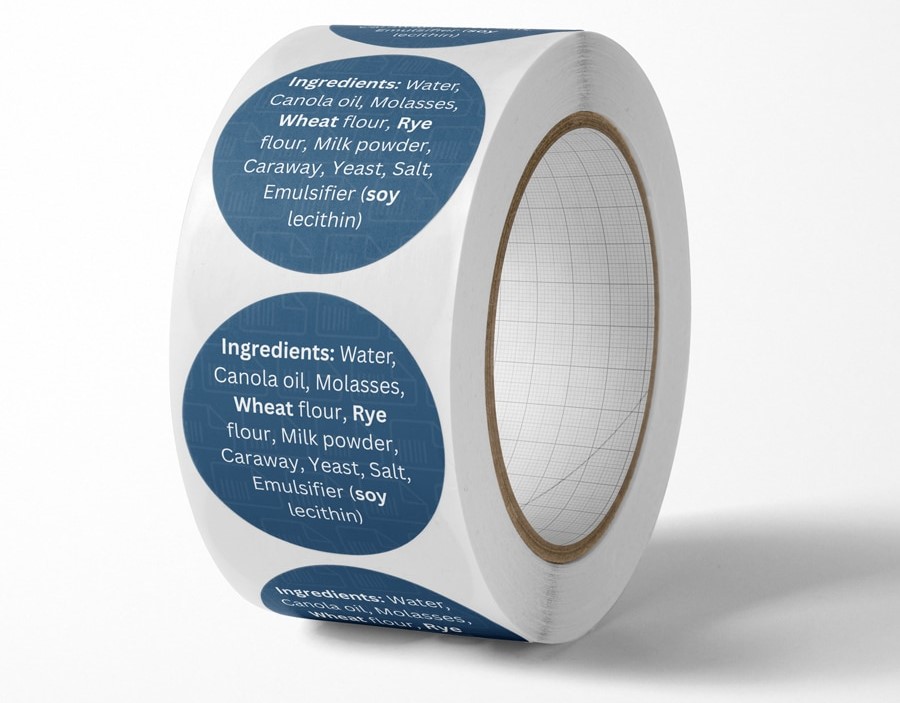PEAL in Plain English: Effortless Allergen Labelling
Food Standards Australia New Zealand (FSANZ) have recently introduced new rules for labelling allergens. These new Plain English Allergen Labelling (PEAL) rules are intended to make it easier for consumers (and people with a food allergy/intolerance) to identify what allergens are in food so they can make informed and safe food choices.
These requirements include that in the statement of ingredients, allergen declarations must:
- Be listed in bold in the ingredients list.
- Use the required allergen names.
- Also be listed in a separate allergens summary statement.
- Use individual nut names rather than the more generic ‘tree nuts’.
The changes will help people find allergen information on food labels more quickly and easily, so they can make informed and safe food choices.
Below is a basic overview of the new food labelling rules. If printing your own food labels, then this article will also provide options on how to achieve this using BarTender labelling software.

What are the changes?
Under the new labelling law, common food allergens must be listed with the plain English name alongside the actual ingredient name. This is shown in the example above.
In the statement of ingredients, allergens must be written:
- In bold font that stands out from the other ingredients.
- In the same size font as other text.
The allergens must also be listed in a summary statement beginning with the word ‘contains’. The summary statement must be next to, but separate from, the ingredient list. It can be above, below or on either side of the ingredient list.
What is the deadline for PEAL compliance?
Businesses have until 25 February 2024 to implement new requirements. A 2-year stock-in-trade grace period will follow this transition. This means any food packaged and labelled with existing allergen declarations before 25 February 2024 may be sold for up to 2 years after the end of the transition period.

How do I implement these changes?
First of all, identify from the list above which allergens could be in your products.
If your label supplier is pre-printing the ingredients on your food labels, they can help with new templates and new artwork for your labels before the deadline.
If you currently print the ingredients on your food labels in-house, it is best to contact a label printer supplier to manage the transition for you. It is important that no ingredients are missed, to ensure you are fully compliant.
Using a software solution like BarTender removes the risk of human error by automating allergen bolding and allowing you to print direct to PEAL standards. BarTender comes with a standard allergen label template that is complaint to PEAL standards. If you have existing label templates, it is also possible to automatically bolden certain words based on a list of allergens.

Leave It To Us
Whether you need professionally printed custom labels or label software solutions, we’ve got you covered. PrintDATA has been supplying hardware and expertise to Western Australian businesses for over 25 years, so you’re in safe hands.
Get in touch with us today to discuss your needs and let us recommend the perfect labels, printers, and software for your business.
* Information correct at the time of publishing.